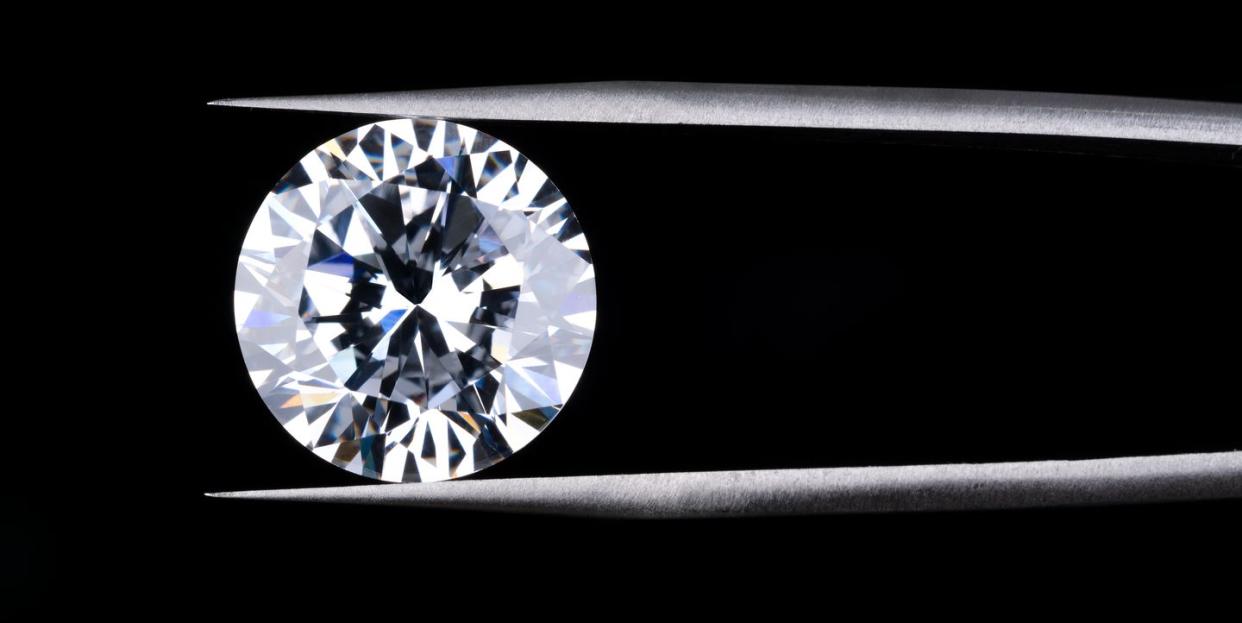The Status Brow Era Has Arrived

If brows frame a person’s face, mine are the equivalent of clear plastic photo sleeve. Statement brows have been in for two decades. Mine have been whispering all the while. I saw the rise and fall of microblading. I considered Latisse. I stuck to two pencils and brow gel and hoped for the best.
Then a pandemic descended and after 18 months in the harsh presence of Zoom, I decided to make an appointment to see Azi Sacks. Sacks had landed in New York from D.C. the previous summer and arrived in a metropolis desperate for her services. Masks obscured and masks revealed—the exposed portion of people’s faces needed not just grooming but weed-whacking. She started with a rented chair at a salon until her clients overwhelmed the front desk.
At the start of 2022, Sacks transitioned to a one-room studio in Chelsea. She has been tinting and shaping brows there ever since. Some brow gurus like a severe arch. Others favor full fluff. Sacks is different. She doesn’t push a particular look. She is less specialist tweezer than brow trauma therapist. She uses her time with clients to quiz them on upkeep and to beg them to toss their pigmented brow gels, which she believes can compromise the follicle.
While she assesses her handiwork, the women (and men) in her chair find themselves opening up—about faith, about their childhoods, about Supreme Court cases and aging and parenthood.
“I do the ancestral brow,” Sacks tells me. It’s in her Persian blood to celebrate people’s roots—literal and metaphorical—as she lends their faces a new kind of architecture. No wonder conversation turns personal fast.
The creative strategist Zara Rahim started consulting with Sacks to grow her unibrow. Others stretched their arches out—the effect languid and undulating. A fanbase grew. On Instagram, Sports Illustrated swimsuit model Brooks Nader snapped selfies while Sacks plucked. The actor Blake Lively sent someone on her team to trial run Sacks’s handiwork. Word spread and I helped spread it. I stood from Sacks’s chair with fluffier and more pronounced brows than I had believed possible. We had spent the 75 or so minutes I was with her ruminating on the nature of ambition.
“I look at least 14% more beautiful,” I texted a friend. When I sent her photos of the before-and-after, she recorded a voice note of herself hollering. “22% at least!!!!!”
Six months later, Sacks is booked solid until April 2023 and has a waitlist that stretches into the hundreds. The singer Lily Allen was on it for weeks. “She was so patient,” Sacks tells me with a maternal smile. People have described getting a chance to see her as a divine experience. Which makes sense—since it seems inevitable that it will soon be easier to seek an audience with the Pope than secure a visit with Sacks. Holding out for the promise of her brow gospel, clients are content to wait.
Experts elsewhere have noticed a similar uptick in demand for brow care. Sania Vucetaj who has operated Sania’s Brow Bar for almost three decades just down the street for Sacks’s new salon had customers streaming in after she reopened her salon during the summer of 2020. Dozens of them had pared back on makeup and now wanted to give their brows the kind of attention once reserved for skincare. Vucetaj is in the process of perfecting a brow “shampoo” formula to promote healthier follicles. In Los Angeles, Kristie Streicher—beloved her so-good-it’s-trademarked “Feathered Brow”—also credits the explosive interest in her work to the months that clients spent at home. Their brows grew untouched and outside the reach of waxers’ overzealous hands. She writes in an email that upon returning to the outside world, people “were inspired to find and allow a more experienced brow specialist to reinvent the shape.”
Jamie Rosen—a contributing Town & Country editor—was Sacks’s first client in the new space. She had never made getting her brows done a habit but Sacks sold her. Sometimes Rosen waffles when she walks out of the studio—call it a crisis of faith. Had she gone too dark, was the shape too much?
“But then I see a picture,” Rosen says. “And I’m like, ‘Oh! They look so much better.’”
You Might Also Like

